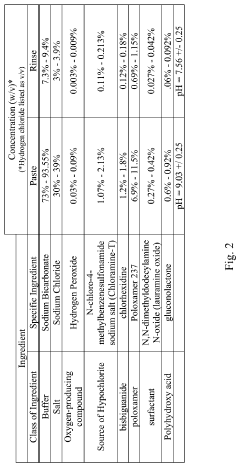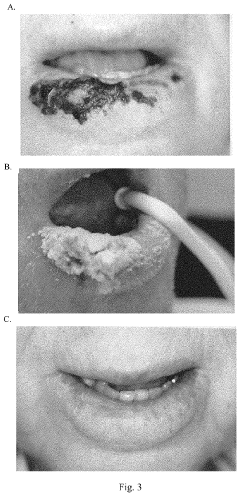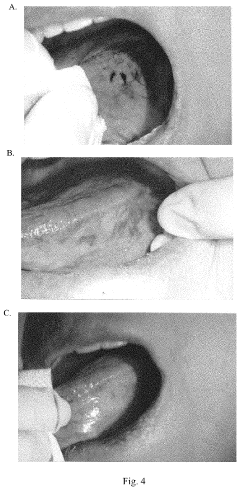Hypertonic Impact on Microbial Growth: Research Insights
Hypertonic Environment and Microbial Growth Objectives
The study of hypertonic environments and their impact on microbial growth has been a subject of increasing interest in microbiology and biotechnology. This research area aims to understand how microorganisms respond and adapt to high osmotic pressure conditions, which are prevalent in various natural and industrial settings. The primary objective is to elucidate the mechanisms by which microbes cope with hypertonic stress and to explore the potential applications of these findings in diverse fields.
One key goal is to investigate the physiological and molecular responses of different microbial species to hypertonic conditions. This includes examining changes in cell morphology, membrane composition, and intracellular solute concentrations. Researchers seek to identify the genes and proteins involved in osmoadaptation, such as those responsible for the synthesis or uptake of compatible solutes like glycine betaine or trehalose.
Another important objective is to assess the impact of hypertonic environments on microbial growth kinetics and population dynamics. This involves studying how growth rates, lag phases, and maximum population densities are affected by varying degrees of osmotic stress. Understanding these parameters is crucial for predicting microbial behavior in natural ecosystems and optimizing industrial bioprocesses.
The research also aims to explore the potential applications of hypertonic stress in biotechnology and food preservation. By manipulating osmotic conditions, it may be possible to enhance the production of valuable metabolites or improve the shelf life of food products. Additionally, studying the osmotic stress response could lead to the development of novel antimicrobial strategies, targeting the osmoadaptation mechanisms of pathogenic microorganisms.
Furthermore, researchers are interested in investigating the ecological implications of hypertonic environments. This includes studying microbial communities in hypersaline habitats and understanding how osmotic gradients influence microbial distribution and diversity in various ecosystems. Such knowledge is valuable for environmental management and bioremediation efforts in saline or polluted environments.
Lastly, the research aims to develop predictive models and tools for assessing microbial growth and survival under hypertonic conditions. These models would be invaluable for a range of applications, from food safety to environmental monitoring and industrial fermentation processes. By integrating data from various experimental approaches, researchers hope to create robust frameworks for understanding and predicting microbial behavior in hypertonic environments across different scales and contexts.
Market Applications of Hypertonic Microbial Control
The application of hypertonic solutions for microbial control has gained significant traction across various industries due to its effectiveness and versatility. In the food and beverage sector, hypertonic solutions are widely used for food preservation, extending shelf life, and maintaining product quality. High-sugar or high-salt concentrations create osmotic pressure that inhibits microbial growth, making this technique particularly valuable for preserving fruits, vegetables, and meat products.
In the pharmaceutical industry, hypertonic environments play a crucial role in controlling microbial contamination during drug manufacturing and storage. This approach is especially important for liquid formulations and injectable medications, where maintaining sterility is paramount. Hypertonic solutions are also employed in the production of certain vaccines and biologics, where they help stabilize the active ingredients and prevent microbial growth.
The cosmetics and personal care industry has embraced hypertonic microbial control for preserving products such as creams, lotions, and makeup. By incorporating high concentrations of humectants like glycerin or propylene glycol, manufacturers can create an environment inhospitable to microorganisms, thus extending product shelf life and ensuring consumer safety.
In agriculture, hypertonic solutions find applications in seed treatment and post-harvest management. Seeds treated with hypertonic solutions exhibit improved resistance to soil-borne pathogens, while fruits and vegetables subjected to hypertonic dips or sprays show enhanced preservation during storage and transportation.
The water treatment industry utilizes hypertonic principles in desalination processes and wastewater treatment. Reverse osmosis, which relies on the principles of hypertonic pressure, is a key technology in producing potable water from seawater. In wastewater treatment, hypertonic conditions are sometimes employed to control microbial populations in treatment ponds and to enhance the dewatering of sludge.
Biotechnology and research laboratories leverage hypertonic environments for various applications, including cell culture media preparation, cryopreservation of biological samples, and selective microbial growth inhibition in experimental settings. The ability to manipulate osmotic pressure provides researchers with a valuable tool for studying cellular responses and developing new microbial control strategies.
In the medical field, hypertonic solutions are used in wound care to create an unfavorable environment for pathogenic microorganisms. Hypertonic saline solutions and honey-based dressings are examples of products that exploit this principle to promote wound healing and prevent infections.
Current Challenges in Hypertonic Microbial Research
The field of hypertonic microbial research faces several significant challenges that hinder progress and limit our understanding of microbial behavior in high-osmolarity environments. One of the primary obstacles is the complexity of cellular responses to hyperosmotic stress. Microorganisms employ various mechanisms to cope with hypertonic conditions, including the accumulation of compatible solutes, modification of cell membrane composition, and alterations in gene expression. Unraveling these intricate adaptive processes and their interplay remains a formidable task for researchers.
Another challenge lies in the development of accurate and reproducible experimental models that can effectively simulate hypertonic environments encountered in nature or industrial settings. Creating controlled conditions that mimic the dynamic and heterogeneous nature of hypertonic environments while allowing for precise measurements of microbial growth and metabolic activities is technically demanding. This limitation often leads to discrepancies between laboratory findings and real-world observations.
The diversity of microbial species and their varied responses to hypertonic stress further complicate research efforts. Different microorganisms may employ distinct strategies to survive and thrive in high-osmolarity conditions, making it difficult to establish universal principles or predictive models. This variability necessitates extensive studies across a wide range of microbial taxa, which is both time-consuming and resource-intensive.
Technological limitations in real-time monitoring of cellular processes under hypertonic conditions pose another significant challenge. While advances in microscopy and molecular biology techniques have improved our ability to observe microbial behavior, capturing the dynamic responses of cells to osmotic stress at high temporal and spatial resolutions remains challenging. This gap in observational capabilities hampers our understanding of the immediate and long-term effects of hypertonic environments on microbial physiology and population dynamics.
Furthermore, the interdisciplinary nature of hypertonic microbial research requires integration of knowledge from various fields, including microbiology, biophysics, biochemistry, and genetics. Bridging these diverse disciplines and fostering collaborative research efforts is essential for comprehensive understanding but often presents logistical and communication challenges.
Lastly, the translation of research findings into practical applications, such as the development of novel preservation techniques or the optimization of industrial fermentation processes, faces its own set of obstacles. Scaling up laboratory discoveries to industrial levels while maintaining efficacy and cost-effectiveness remains a significant hurdle in the field of hypertonic microbial research.
Existing Hypertonic Microbial Growth Control Methods
01 Effect of hypertonic solutions on microbial growth inhibition
Hypertonic solutions can inhibit microbial growth by creating osmotic stress, causing water to leave microbial cells and disrupting their normal cellular functions. This effect can be utilized in various applications to control or prevent the growth of microorganisms in different environments.- Effect of hypertonic solutions on microbial growth inhibition: Hypertonic solutions can inhibit microbial growth by creating osmotic stress, causing water to leave microbial cells and disrupting their metabolic processes. This effect can be utilized in various applications, including food preservation and medical treatments.
- Use of hypertonic solutions in medical applications: Hypertonic solutions are employed in medical treatments, such as wound care and respiratory therapy. These solutions can help reduce microbial colonization, improve healing, and manage fluid balance in patients with various conditions.
- Hypertonic solutions in food preservation: The application of hypertonic solutions in food preservation techniques helps extend shelf life by inhibiting microbial growth. This method is particularly effective in preserving fruits, vegetables, and other perishable food items.
- Development of novel hypertonic formulations: Research focuses on developing new hypertonic formulations with enhanced antimicrobial properties. These formulations may combine various osmotic agents, preservatives, and other active ingredients to achieve better microbial growth control.
- Microbial adaptation to hypertonic environments: Studies investigate the mechanisms by which some microorganisms adapt to hypertonic environments. Understanding these adaptations can lead to improved strategies for controlling microbial growth in various applications and industries.
02 Preservation of food and pharmaceutical products
Hypertonic solutions are used in food and pharmaceutical industries to extend shelf life and prevent microbial contamination. By creating an environment with high osmotic pressure, these solutions can effectively inhibit the growth of bacteria, fungi, and other microorganisms in various products.Expand Specific Solutions03 Microbial fermentation in hypertonic conditions
Some microorganisms can adapt to hypertonic environments and continue to grow and ferment. This property is exploited in certain industrial processes to produce desired metabolites or compounds under controlled hypertonic conditions, which can also help prevent contamination by other microorganisms.Expand Specific Solutions04 Hypertonic solutions in medical applications
Hypertonic solutions are used in various medical applications, including wound care and treatment of certain infections. These solutions can create an unfavorable environment for microbial growth while promoting healing processes in the human body.Expand Specific Solutions05 Development of osmotolerant microorganisms
Research focuses on understanding and developing osmotolerant microorganisms that can survive and thrive in hypertonic environments. These studies aim to improve industrial processes, develop new biotechnological applications, and gain insights into microbial adaptation mechanisms.Expand Specific Solutions
Key Players in Hypertonic Microbiology Research
The research on hypertonic impact on microbial growth is currently in a developing stage, with increasing interest from both academic institutions and industry players. The market size for applications of this technology is expanding, driven by potential uses in food preservation, pharmaceuticals, and environmental management. The technology's maturity varies across different sectors, with some areas more advanced than others. Key players like Guangdong University of Technology, Shanghai Jiao Tong University, and DSM IP Assets BV are contributing significantly to the field's advancement. Companies such as DuPont de Nemours, Inc. and Société des Produits Nestlé SA are exploring commercial applications, while research institutions like the University of Birmingham and Wuhan University are pushing the boundaries of scientific understanding in this domain.
DSM IP Assets BV
DuPont de Nemours, Inc.
Core Innovations in Hypertonic Microbial Research
- Synergistic combination of at least one hypotonic shock and at least two hypertonic shocks, with the last shock being hypertonic, for enhanced microbial cell disruption and extraction.
- Application of specific osmotic shock sequences (e.g., hypertonic/hypotonic/hypertonic or hypotonic/hypertonic/hypertonic) for effective disruption of a broad spectrum of microorganisms.
- Enhanced extraction and isolation of various cellular constituents and bioproducts, particularly lipids, oils, and triacylglycerols from algae.
- A composition comprising chlorhexidine, chloramine T, sodium bicarbonate, potassium bicarbonate, and hydrogen peroxide, formulated as a liquid or paste, providing a broad-spectrum antimicrobial effect while promoting wound healing and pain relief, and not inducing pathogen resistance.
Regulatory Framework for Hypertonic Microbial Applications
The regulatory framework for hypertonic microbial applications is a complex and evolving landscape that encompasses various aspects of safety, efficacy, and environmental impact. Regulatory bodies worldwide have established guidelines and standards to ensure the responsible development and use of hypertonic solutions in microbial control and growth manipulation.
In the United States, the Food and Drug Administration (FDA) plays a crucial role in overseeing the use of hypertonic solutions in food preservation, pharmaceutical applications, and medical devices. The FDA's regulations focus on ensuring that these applications do not pose undue risks to human health or the environment. For instance, the use of hypertonic solutions in food preservation must comply with the Food Safety Modernization Act (FSMA), which emphasizes preventive controls and risk-based approaches.
The Environmental Protection Agency (EPA) also has jurisdiction over certain hypertonic microbial applications, particularly those used in environmental remediation or as pesticides. The EPA's regulations aim to balance the benefits of microbial control with potential ecological impacts, requiring extensive testing and documentation before approval.
In the European Union, the European Food Safety Authority (EFSA) and the European Medicines Agency (EMA) oversee the use of hypertonic solutions in food and pharmaceutical applications, respectively. These agencies have established stringent guidelines for the assessment of safety and efficacy, including requirements for comprehensive toxicological studies and environmental impact assessments.
Internationally, the Codex Alimentarius Commission, established by the Food and Agriculture Organization (FAO) and the World Health Organization (WHO), provides global standards for food safety, including the use of hypertonic solutions in food preservation. These standards serve as a reference for many countries in developing their national regulations.
The regulatory framework also addresses the potential for antimicrobial resistance development in hypertonic environments. Regulatory agencies require manufacturers to demonstrate that their products do not contribute to the emergence of resistant microbial strains, a growing concern in both medical and agricultural sectors.
As research in hypertonic microbial applications continues to advance, regulatory frameworks are adapting to keep pace with new technologies and applications. This includes the development of guidelines for novel hypertonic formulations, such as those used in biofilm control or in the production of probiotics. Regulatory bodies are increasingly emphasizing a risk-based approach, requiring manufacturers to provide comprehensive data on the long-term effects of hypertonic solutions on microbial ecosystems and human health.
Environmental Impact of Hypertonic Microbial Control
The environmental impact of hypertonic microbial control methods is a critical consideration in various industries, including agriculture, food processing, and water treatment. These methods, which rely on high solute concentrations to inhibit microbial growth, can have both positive and negative effects on the surrounding ecosystem.
One of the primary environmental benefits of hypertonic microbial control is the reduction in the use of traditional chemical biocides. By utilizing natural osmotic pressure to suppress microbial activity, industries can minimize the release of potentially harmful substances into the environment. This approach aligns with the growing demand for more sustainable and eco-friendly practices across various sectors.
However, the application of hypertonic solutions can lead to localized changes in soil or water salinity. In agricultural settings, excessive use of hypertonic treatments may result in soil salinization, potentially affecting crop yields and altering soil microbial communities. Similarly, in aquatic environments, the discharge of hypertonic effluents can disrupt the osmotic balance for native flora and fauna, particularly in freshwater ecosystems.
The impact on non-target organisms is another crucial aspect to consider. While hypertonic conditions effectively control harmful microbes, they may also affect beneficial microorganisms that play essential roles in nutrient cycling and ecosystem balance. This potential disruption of microbial diversity could have cascading effects on local food webs and ecosystem functions.
From a water management perspective, the use of hypertonic solutions may increase water consumption in certain applications. The need for rinsing or dilution to restore normal osmotic conditions can strain water resources, particularly in water-scarce regions. This aspect necessitates careful consideration of water use efficiency when implementing hypertonic microbial control strategies.
On the positive side, hypertonic microbial control can contribute to reduced environmental contamination by foodborne pathogens and spoilage organisms. By effectively preserving food products and maintaining hygiene in processing facilities, these methods can help minimize food waste and the associated environmental impacts of production and disposal.
The long-term ecological effects of hypertonic microbial control are still being studied. Research is ongoing to assess the potential for microbial adaptation to hypertonic conditions and the implications for ecosystem resilience. Understanding these long-term impacts is crucial for developing sustainable microbial control strategies that balance effectiveness with environmental stewardship.



